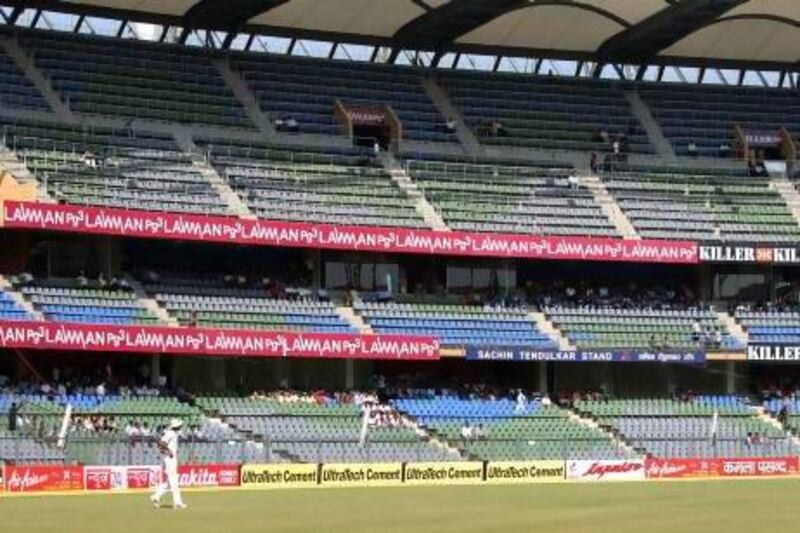Remember the boy who cried, "Wolf"? He did it so often that no one believed him. So it is with tales about the imminent demise of Test cricket. There's little doubt that the venerable old institution needs periodic health checks. What it doesn't need is a wrong diagnosis.
Now that the Indian Premier League is underway, it's inevitable that a slew of articles will appear, contrasting the crowds for the much-hyped Twenty20 tournament with those found for Test matches on the subcontinent and elsewhere. It is a simple argument that assumes that the five-day game and its small brother feed from the same trough - that the little one gains strength at the expense of the oldie.
Test cricket has survived two World Wars, revolutions and fights for independence in several of the countries where it is played. To suggest that an abbreviated offshoot that is less than a decade old will kill it off is to be alarmist.
At the same time, concern about its future is justified. When it is eventually released, cricket lovers must watch Death of a Gentleman, a documentary about the current state of Test cricket, seen through the eyes of those that play, watch and administer it. The website devoted to it lays out the premise quite clearly.
"Test cricket is a game that has no right to exist in the 21st century," it says. "The five-day game is the purest form of the second-most popular sport on Earth, representative of tradition, history and identity. Yet as the short attention spans of a new generation dictate immediacy, the Test game is in danger of being swamped by its shorter, sexier, more financially viable cousin, 'Twenty20'.
"Money corrupts the best of intentions, and as cricket's administrators rub their hands with glee, the gentleman's game is now a product left at the back of the shelf."
Some of the game's most eloquent voices have also warned about the dangers of excessive T20 exposure in recent times. More than 15 months before the IPL came into being, Greg Chappell, then India's coach, had spoken at length about the inherent dangers of staking most resources on the format that takes up least time.
The passage of time hasn't changed his views. "The importance of Test cricket has to be protected," he said at a lecture in Kolkata a month ago. "The advent of Twenty20 cricket has taken the game to a different direction.
"We've got to remember that Test cricket will always be the No 1 challenge. It's a great learning experience. It harps on patience, discipline and teaches you to take the good with the bad … The lessons learnt during my playing days have helped me in other aspects of my life."
The IPL and other leagues like it are in vogue because people want to watch the games. During the first and last fortnight of the competition, it is hard to find an empty seat. The broadcasters and sponsors spend so much on promoting the event that you'd have to go into Rip van Winkle-like slumber to pretend it is not happening.
If we are talking about the health and future of Test cricket, it is that one aspect we should focus on. Test cricket needs context, and it needs to be sold better. A one-off Test championship played over a month is not the answer. The solution is to ensure that the Future Tours Programme gives every side an equal opportunity, with a schedule that invests every match with meaning.
The so-called minnows - not necessarily a reflection of standards, but of appeal to broadcasters - will never improve if their quota is rationed. In the past two years alone, Sri Lanka have beaten South Africa in their backyard, New Zealand have won in Australia, and bossed a home series against England. Pakistan thrashed England on neutral turf in the UAE.
The idea of 'selling' Test cricket will strike some as tawdry. But in the modern world, with a wealth of options available for spectators, complacency is a bigger crime. Just observe the way a World Twenty20 or the IPL is promoted, and then compare it to the lukewarm build-up to most Test series that are not the Ashes.
Don't blame the IPL. Look instead to administrators so smug after signing multimillion or billion-dollar broadcast deals that they no longer care whether players perform in front of empty stands.
Players have no qualms about admitting that they find the IPL's pay cheques enticing. They will also tell you how much they love playing in front of a full house. Instead of trashing the IPL, learn from it. Market Test cricket for what it is - an utterly unique and compelling sport.
Our old gent isn't dead, but the worn threads need to go. He needs a new Zegna suit.





